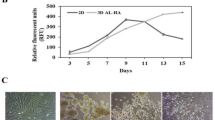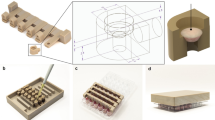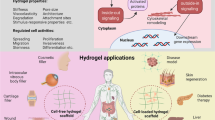Abstract
Organ manufacturing products hold the promise to be used widely in the future for complex organ failings. The cryopreservation of the product is a very important step in the commercialization activities. In this article, a new cell cryopreservation technique, whereby, cryoprotectants were directly incorporated into the cell/hydrogel constructs, prototyped according to the predesigned structure and then subjected to a special freezing/thawing process. The rheological and hydration properties of the cryopreservation systems indicated that the hydratabilities of the gelatin/alginate hydrogels were greatly increased while the eutectic temperatures were greatly decreased by the addition of glycerol. Dextran-40 was found to be effective to improve the cell survival when incorporated with glycerol. The optimal volume concentration of the cryopretectans was 2.5% (v/v) glycerol and 5% (g/mL) dextran-40 in the gelatin/alginate hydrogel. Under these conditions, the cell viability in the construct was 96.3 ± 3.4%. Microscopic, thiazolyl blue (MTT) and hematoxylin and eosin (HE) staining results all indicated that the cells began to proliferate after thawing. The cells in the gelatin/alginate hydrogel with both glycerol and dextran-40 had greater proliferations than with only glycerol or dextran-40. This approach holds promise for a variety of applications in cell assembly for high-throughput drug screening and complex organ manufacturing areas.
Similar content being viewed by others
Article PDF
Author information
Authors and Affiliations
Corresponding author
Rights and permissions
About this article
Cite this article
Wang , X., Xu, H., Yan, Y. et al. Cryopreservation of cell/hydrogel constructs based on a new cell-assembling technique. Nat Prec (2009). https://doi.org/10.1038/npre.2009.3722.1
Received:
Accepted:
Published:
DOI: https://doi.org/10.1038/npre.2009.3722.1



